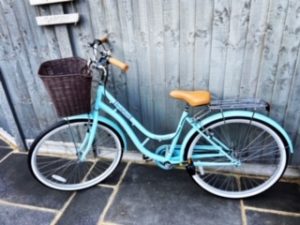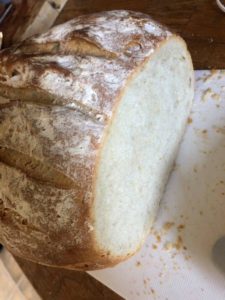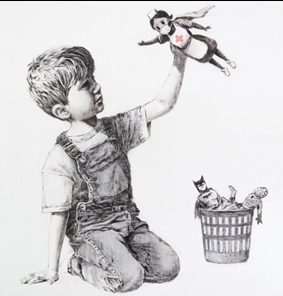We just want to start this week’s blog by saying that we think you are all doing an AMAZING job. We LOVE seeing how creative you’re being and the memories you’re making as families. THANK YOU for your continued enthusiasm and dedication – it means so much to us.
This week, Mrs Pike has been doing family reading. Each evening, every member of the family chooses a book that they love and has been sharing it out loud before bed.

Miss Shaw has been enjoying her new bike and has loved getting out in the fresh air finding new places to ride.

Mrs Atkins has been baking bread. So far she has tried white bread, sourdough, granary and spelt. What do you think?

Here is the Home Learning for this week. Please remember that it is not a requirement to complete all of the tasks listed. Ideally, aim to do the Reading, Writing and Maths activities over the week and work on anything else in addition if you wish. Please don’t feel restricted by these activities either; if your child is motivated to do other Reading, Writing or Maths that is better centered on their interests, feel free to do these instead. We understand that all children are individuals and in these challenging times, value their security and happiness most of all.
Topic:
Why farming matters
Farming landscapes: farm landscapes are created by generations of farmers: they bring us food, provide habitats but also maintain the countryside for us to walk in and enjoy.
![]()
a. Look at the farm image and annotate with appropriate topic related vocabulary. Do you know the meaning of these topic related words? If not, speak to a grown up, use a dictionary or the internet to help you: pasture, arable, dry stone walls, buildings/shelters, tracks, hedges, crops, solar panels, wildflower margins, hedges, dry stone walls, tree belts, fences.
b. Can you identify natural and man-made/influenced features in the photos? A table may help.
c. Can you see any boundaries? What are these for?
English:
Take a look at the link below have a go at the activities. We suggest starting with the sentence work as it could help you write your story. Maybe you could email us your stories, we’d love to read them.
https://www.pobble365.com/the-life-of-a-snail
Guided reading:
This link takes you some guided reading all about snails. There are 3 different levels so choose the one that challenges you (but that isn’t too tricky) and complete the comprehension task. All the information can be found in the text – remember to use your skimming and scanning techniques to help find it.
HANDY HINT! Why don’t you try doing a read aloud think aloud (highlight and make notes) before you answer the questions.
https://content.twinkl.co.uk/resource/a9/bf/t-l-4614-snail-reading-comprehension-activity-_ver_2.pdf?__token__=exp=1588600765~acl=%2Fresource%2Fa9%2Fbf%2Ft-l-4614-snail-reading-comprehension-activity-_ver_2.pdf%2A~hmac=dea1706b09b0f4a7d49c3074de127db799269b8bcc3c4765ace6e483f2c81a7a
Science:
Can you make a daily diary of what you do to maintain a healthy lifestyle for the week? Record how many hours sleep you’re getting each night, how much exercise and what kind you are doing each day, are you drinking the recommended amount of water etc. After a couple of days, if you realise you’re not doing as much as you can to be healthy, can you make some changes and see if it makes you feel any different?
This could be recorded however you’d like – pictures, a table, on a computer etc. These links may help you:
https://www.bbc.co.uk/bitesize/topics/zrffr82/articles/ztsqfcw
https://www.theschoolrun.com/homework-help/keeping-healthy
Science from Miss Stapley THE SCIENCE OF OOBLECK
https://www.science-sparks.com/how-to-make-oobleck/
Did you notice that if you make a ball with oobleck or gloop it feels solid, but if you drop the oobleck on the floor it turns liquid again? The slime is a non – Newtonian fluid as it doesn’t flow like liquids normally do.
https://www.youtube.com/watch?v=Fnd-2jetT1w
Cornflour gloop ( oobleck ) is made up of molecules arranged in long chains. When the chains are stretched the liquid will flow, but when you force them together they stick together to form a solid.
OOBLECK RECIPE
• Cornflour
• Water
• Food colouring – optional
• Ice cube trays – optional
• Mixing bowl
• Colander, funnel and beakers – optional, but great for messy fun!
INSTRUCTIONS FOR MAKING CORNFLOUR GLOOP
• Fill a cup with cornflour and add to the bowl
• Add water very slowly mixing with your hands, until you get a sticky, slimy gloop.
• If you want to make it coloured add some food colouring. ( be careful this can stain skin and clothes)
• Play with the slime and see how it behaves. Can you make it into a ball? and what happens if you throw it onto the floor?
• Can you squeeze the slime into a ball? What does it feel like? How long does the ball stay solid after you let go?
• If you used less water do you think the slime would fall faster or more slowly through the colander?
OOBLECK CHALLENGE
Can you make a giant oobleck tray and walk on oobleck?
HOW TO MAKE A GIANT OOBLECK TRAY
To make our giant oobleck tray – pour about 1 kg of cornflour into a large black tray and slowly added water until the consistency was wet, but solid when squeezed.

Maths
This activity requires weighing scales. If you don’t have any, try making and using a DIY balance scale and a bit of creativity! Here’s an example… https://gosciencekids.com/diy-balance-scales-toddlers-preschoolers/
Heavier or lighter.
Find 5 objects in your house and order them from what you think is lightest to heaviest.
Then weigh the first one – use this weight to estimate the weight of the second object then weigh the second one. Was your estimate close?
Keep going along your line recording your estimation and the actual weight. Hopefully your estimates will get more accurate as you go on. Was your original order correct?
Choose two of your 5 items and compare their weight. Which is heavier and which is lighter. How do you know? Record your findings using the symbols. This can be repeated with different toys.
Example:
Barbie (104g) > Toy car (90g)
Have a go at these questions:

Spelling
This week we are revisiting rare graphemes for the /i/ phoneme. Say what you can see in the pictures below. Sound out the words and write them down. Note that in these words, the /i/ sound is made with a y or ui. Can you find some more unusual ways of making the /i/ sound?
Be a word detective – make a word web of as many words as you can find that contain an /i/ sound with a rare grapheme. Use these words to write into sentences. Challenge: How many words can you fit into one sentence whilst making sure it still makes sense?
ANSWERS TO PICTURE CLUES: gym, cygnet, building, mystery.
Art from Mrs Pearson :
Art Challenge Who’s YOUR SUPERHERO?
For this week’s Art Challenge I would like you to produce some art that is linked to a superhero. Your superhero can be real, such as our key workers, or someone in your family, or a fictional character from a comic, film or your own imagination. It can be a drawing, a figure made from a kitchen roll tube, street art or anything else that you can think of.
I hope this may inspire you:

This new Banksy artwork has appeared at Southampton General Hospital.
It shows a young boy kneeling by a wastepaper basket dressed in dungarees and a T-shirt. He has discarded his Spiderman and Batman model figures in favour of a new favourite action hero – an NHS nurse. The artist left a note for hospital workers, which read: “Thanks for all you’re doing. I hope this brightens the place up a bit, even if it’s only black and white.”
However, if this doesn’t appeal to you then you can still send any other art work to me and I will post that on the Blog too.
Please email your artwork to me:
n.pearson@stpeterswaterlooville.hants.sch.uk
Thank you
Keep creating and keep safe!
Mrs Pearson
Music from Mrs Sumba
Go to the website below and watch Radzi Chinyanganya’s video about George Gershwin.
https://www.bbc.co.uk/teach/ten-pieces/classical-music-george-gershwin-rhapsody-in-blue/zkcy6v4
Why is Gershwin considered to be a musical trailblazer?
Now listen to the whole piece in the second video and create a cityscape as you listen.
RE learning from Miss Honeywell
As part of your RE learning, we would like you to focus upon the upcoming celebration of Pentecost – this day is celebrated fifty days after Easter Sunday, to remember how the Holy Spirit appeared to the Apostles of Jesus and gave them hope while they were in Jerusalem.
Can you complete ONE of the following activities, to develop your knowledge of this special time in the Liturgical Year?
– Create a religious crossword that includes the following key words and symbols: wind, flame, tongue, Holy Spirit, disciples, Jerusalem. Can you add more of your own? Don’t forget to record your clues!
– Design a celebration card to spread the Good News at Pentecost – could you post it to a friend to spread joy and hope at this difficult time?
– Write a drama script to ‘act out’ the scene of the disciples as Pentecost with your family at home – what happened to the followers of Jesus?
– Make 10 quiz questions about the Pentecost story. Could you ask a friend or family member about them when you next chat on the webcam/internet, or over the phone?
– Imagine you are a news reporter who has been sent to Jerusalem to find out more about the events that took place at Pentecost. Which 5W questions (who, what, where, when, why) would you ask the disciples?
– Build a model of one of the following Pentecost symbols (flame, wind, speaking in tongues, Holy Spirit) to put on display and remind you that Jesus is near. Which resources could you use from home? Plasticine, recycled plastic, painted cardboard?
– Research the story of Pentecost on the internet, from a Biblical website. Can you draw a thought bubble and record how the feelings of the disciples changed throughout the story?
Have a wonderful bank holiday weekend!
Miss Shaw, Mrs Atkins and Mrs Pike

